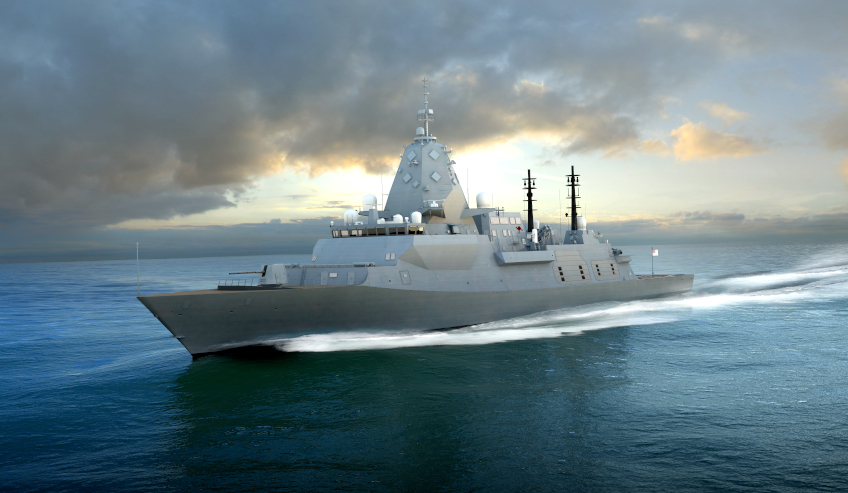An Australian defence industry gearing supplier has thrown its support behind the BAE Systems' SEA 5000 Future Frigates bid.
David Brown Santasalo, a manufacturer of propulsion gearboxes for BAE Systems' Global Combat Ship (GCS) for the UK Navy, said it will be looking to maximise the involvement of Australian industry in all phases of the program and its partnership with BAE Systems offers more opportunity for the business to grow and participate in international shipbuilding programs.
"Localisation is at the core of both our business and our participation in the SEA 5000 Future Frigate program. We are delighted to be working with BAE Systems to provide a solution that not only provides a state-of-the-art anti-submarine warfare (ASW) vessel for the Commonwealth of Australia, but also benefits the Australian economy and provides work for local people and businesses," said Dean Leydecker, managing director Australia for David Brown Santasalo.
"David Brown Santasalo has operated in Australia for more than eight decades and has provided gearing products and services to a multitude of customers, from local process industry SMEs to multinational corporations. We are excited to support BAE Systems with their Global Combat Ship-Australia (GCS-A) offering as it represents significant opportunities for local industry development and employment for our future generations."
The government's SEA 5000 Future Frigate Program seeks to establish the in-country industrial capability necessary to support the build, operation and sustainability of the Future Frigates which will replace the Anzac class frigates.
David Brown Santasalo, which was formed when David Brown merged with Santasalo in 2016, has delivered mission critical mechanical power transmission systems to a range of critical applications including Type 23 Frigate, Challenger 2, Titan and Trojan and CVR(T).
The company’s presence in Australia began with key engineering heritage brands; Richardson Gears, Sonnderdale and John Welsh, which all became part of the David Brown Santasalo brand several decades ago.
Currently, more than 50 per cent of David Brown Santasalo's existing supply chain is already based in Australia. The company has 52 employees in Australia.
BAE Systems, which is offering the Global Combat Ship-Australia for the SEA 5000 project, has said if its bid is successful, this will expand the scale of opportunities for Australian industry from participation in Australia’s nine ship program to a global 17 ship program, including the UK.
So far, Tasmania's Liferaft Systems Australia and Victoria's Mackay Consolidated Industries have already won contracts on the UK Type 26 Global Combat Ship program for the Royal Navy.
BAE Systems Australia chief executive Glynn Phillips said the company is looking to increase the number of Australian businesses contributing to the project.
"Australian businesses have proved they are internationally competitive and can win work in global markets, creating important export sales," Phillips said.
"As a leading global exporter of defence equipment, our long-term ambition is to build upon this and create a global shipbuilding export hub in Australia.
"Seventeen ships provides Australian industry with a better chance to increase the skills and capabilities of local suppliers and ultimately deliver a more sustainable local shipbuilding industry."
Australian businesses could secure more opportunities across the global shipbuilding program if BAE Systems' joint proposal with Lockheed Martin Canada is chosen to deliver a fleet of up to 15 GCS for the Canadian Surface Combatant (CSC) project, a project the Canadian government is expecting to cost about CAD$56-60 billion.
So far, the British firm and the UK government have committed to the transfer of more than $1.5 billion of technical design and intellectual property to Australia if BAE Systems secures the SEA 5000 project.
BAE Systems has also said it will establish a digital shipyard that will transform Australia's shipbuilding industry and facilitate a transfer of intellectual property and technical data, including the digital ship design optimised for the production of the Global Combat Ship.
The innovative digital shipyard will bring the "ship to life" during its service life, with intelligent systems, both on board and linked to those ashore, that will monitor the performance of the ship and its systems. The digital shipyard will also include an inventory of parts, including cost and acoustic signature, suppliers and their details.
BAE Systems also recently unveiled its workforce mobilisation strategy for the SEA 5000 project, with a recruitment strategy that will include an Early Careers Program to create a pipeline of apprentices and graduates throughout the build phase of the $35 billion project.
The UK contender will commit to apprentices in steelwork, mechanical, electrical and technical trades, who will be central to the company’s strategy to ensure the right breadth and depth of skilled workers are brought into the multi-decade program. The company is anticipating that, at its peak, the Early Careers Program will have a population of around 150 apprentices, which will continue throughout the 35-year program.
A graduate program for business and engineering students will also offer opportunities for international placements across the company’s global business.
Fincantieri and Navantia are also tendering for the $35 billion SEA 5000 project to replace the Anzac frigates from the mid 2020s. The winner will be announced in 2018.



